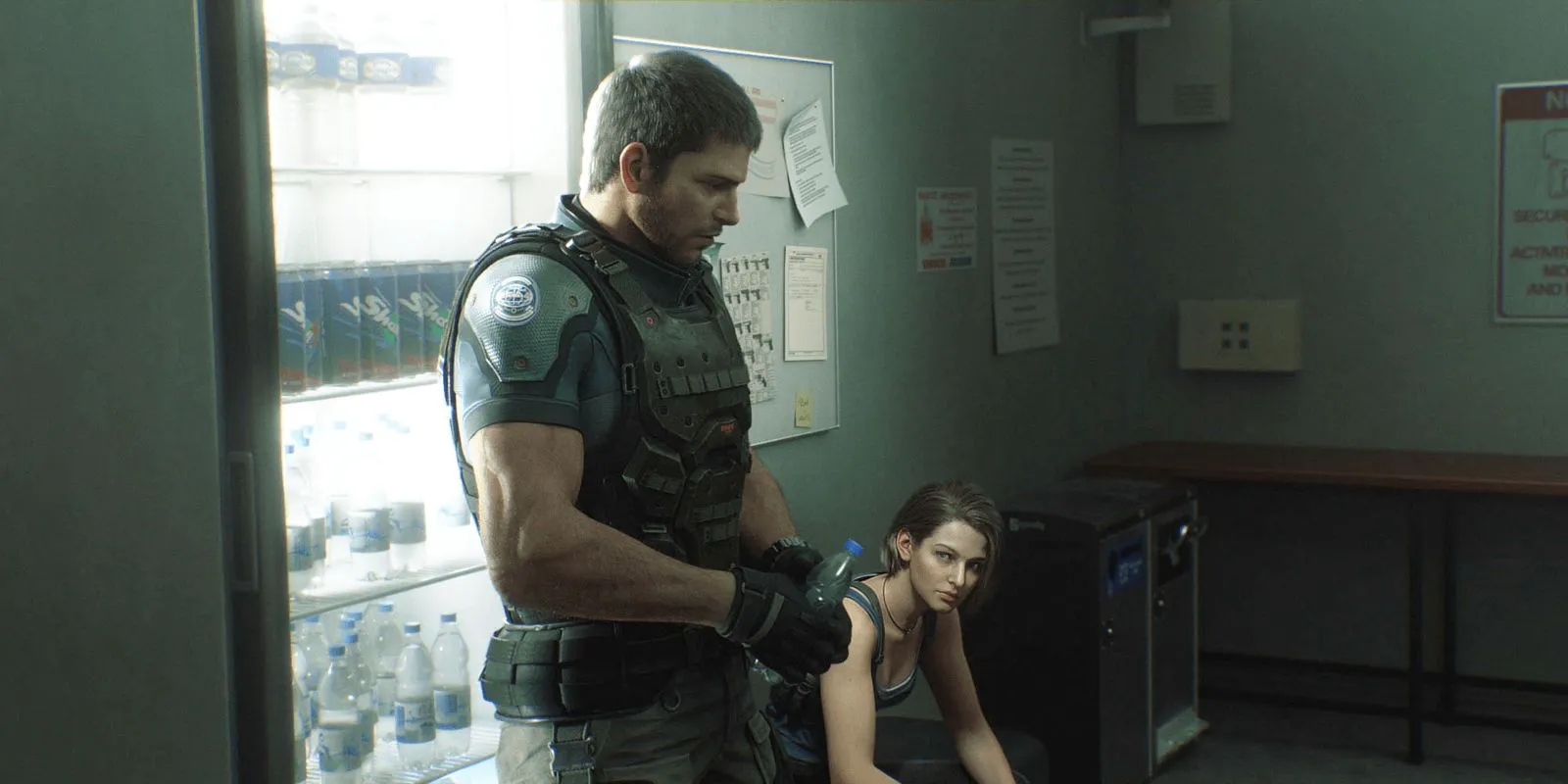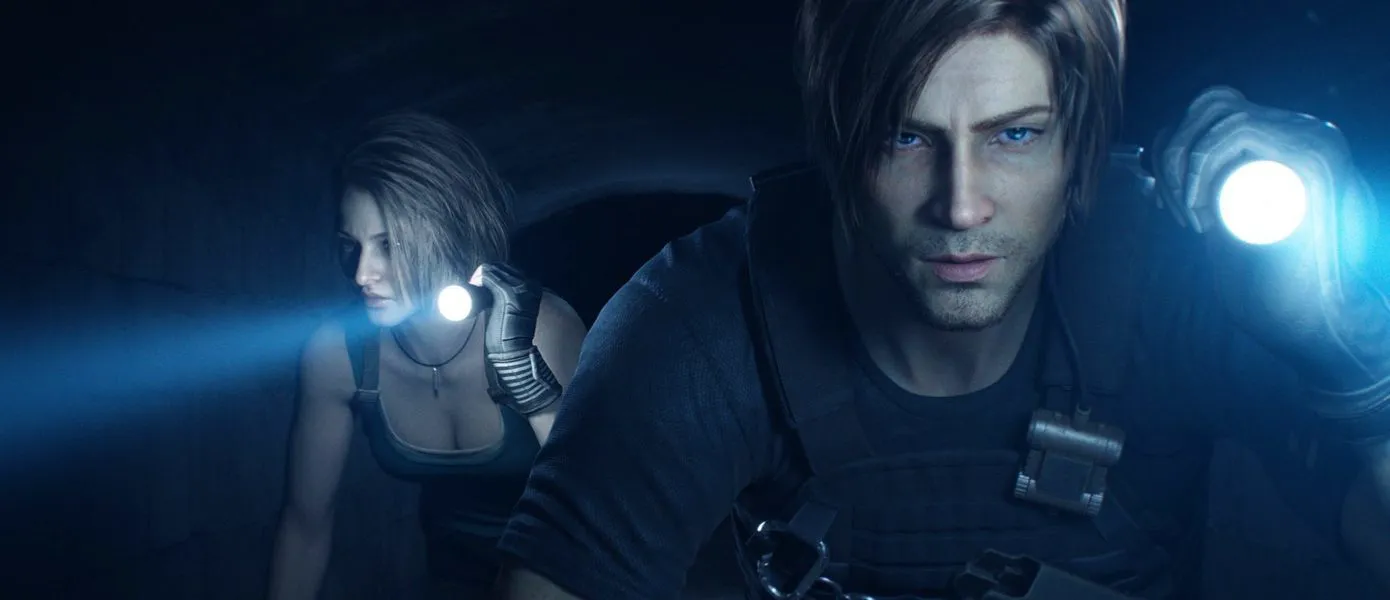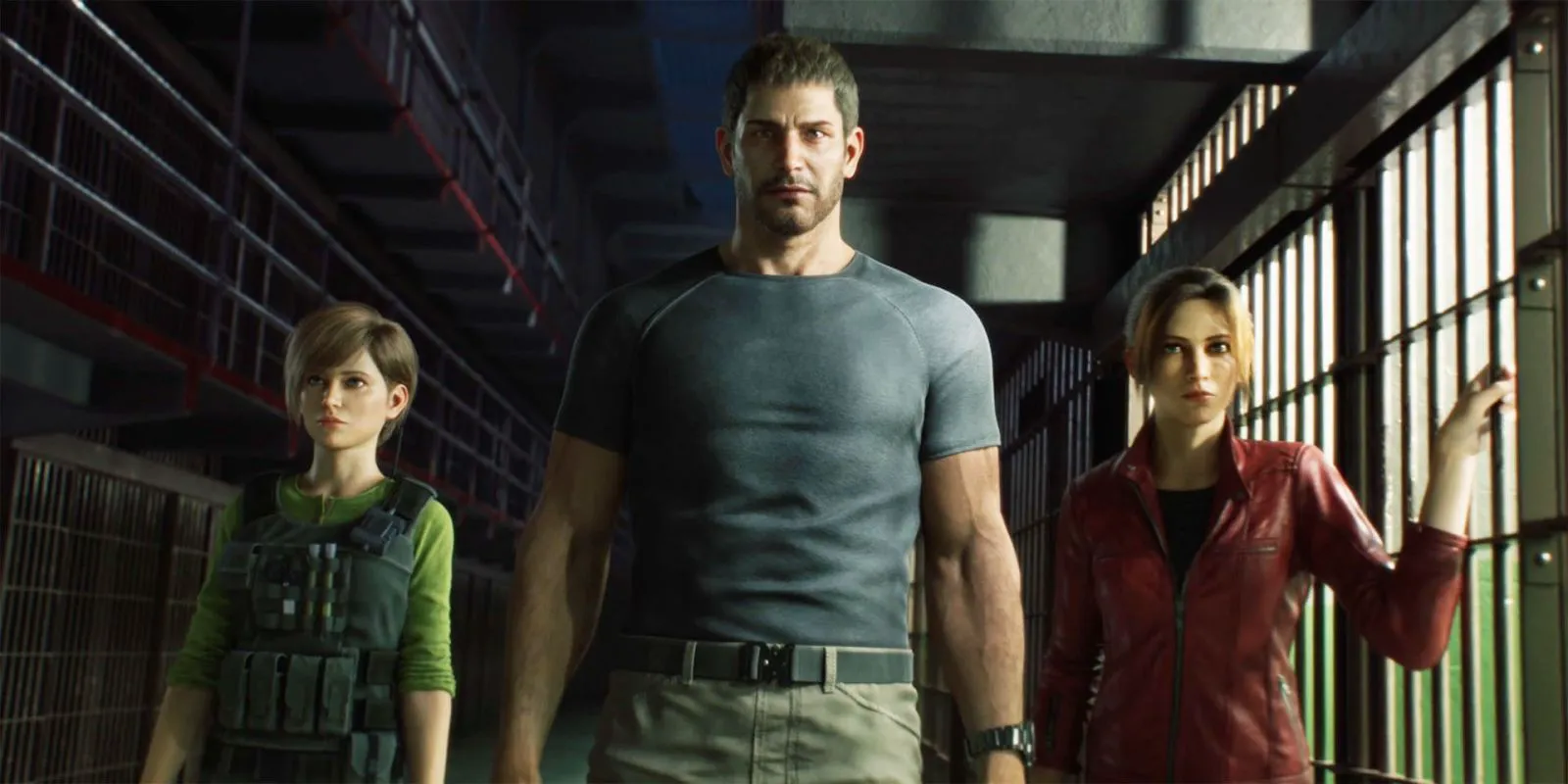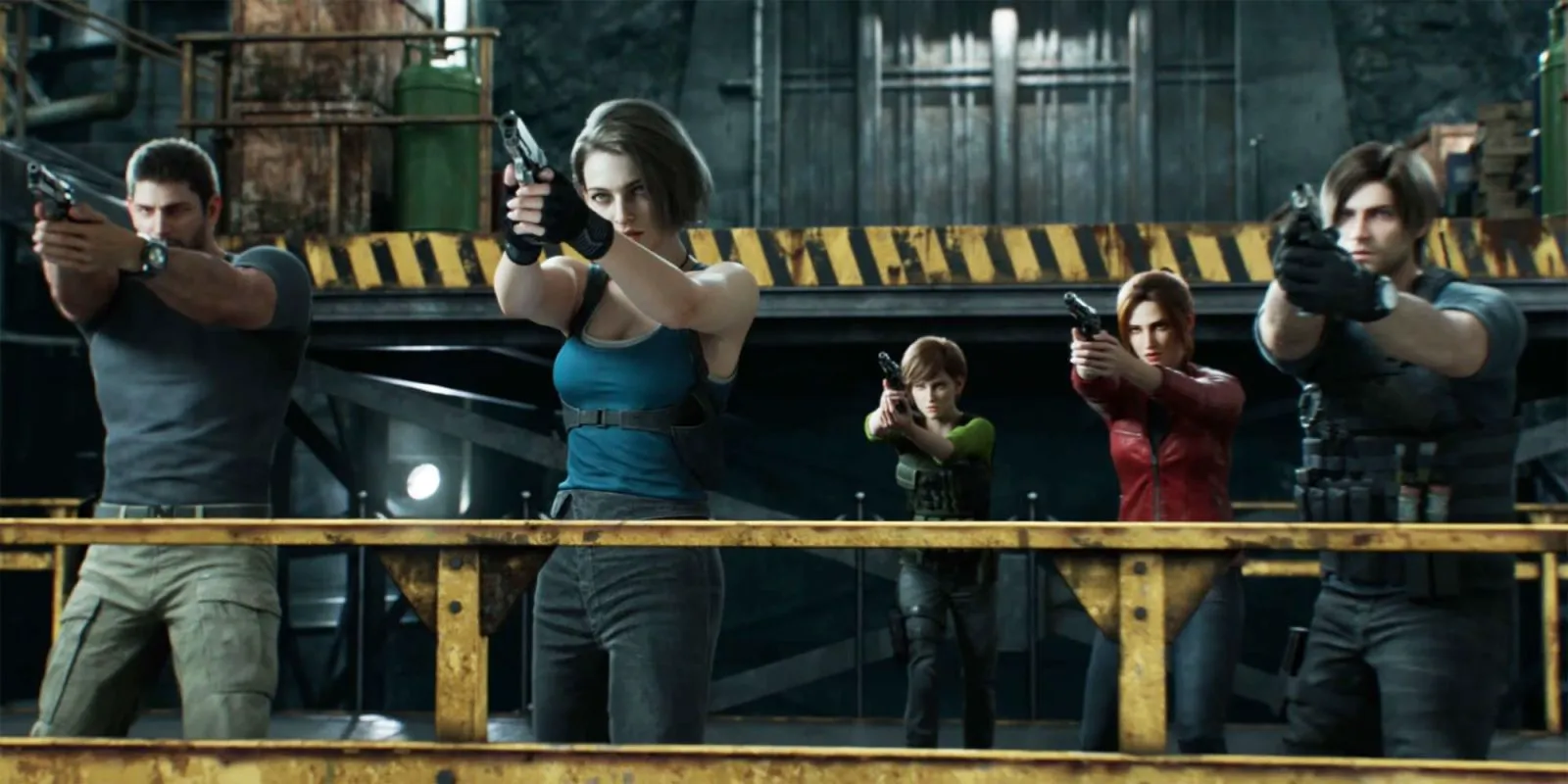For newcomers venturing into the zombie-infested landscapes of “Resident Evil,” the franchise might seem daunting. It’s encased in such a thick layer of pop culture that only seasoned geeks can navigate the limb mutations and chaotic plot threads. Games (numbered, unnumbered, remakes, and remasters), comics, CGI anime, and even a reboot in the form of a Netflix series (a failed attempt) – each new installment supposedly builds upon the unified narrative of battling corporations and biological weapons. However, to be frank, there’s no need to delve deep into the universe’s plasma; it’s enough to grasp the DNA of “Resident Evil”: blood, zombies, and genre thrills.

A scene from the animated film “Resident Evil: Death Island”
The Raccoon City Incident and Beyond
It all began with Raccoon City… again. A flashback transports viewers to a rainy September night in 1998, when Leon Kennedy and Claire Redfield first crossed paths, and Jill Valentine played cat and mouse with Nemesis. Another elite squad was dispatched to rescue the higher-ups of the evil Umbrella Corporation; only two survived the mission. Years later, the Raccoon City veterans (including Leon, Claire, Jill, Rebecca Chambers, and Chris Redfield) unite to uncover why a new iteration of the virus has emerged in Alcatraz prison.

A scene from the animated film “Resident Evil: Death Island”
Death Island: A Reunion of Heroes
Formally, “Death Island” is positioned on the timeline after the events of the sixth game and the Netflix anime series “Infinite Darkness.” The Biohazard has escaped the confines of streaming, and in some places, the zombie adventure even premiered in theaters before its online release (such as in Singapore and Japan). Sony decided to follow Marvel’s approach and assembled its own Avengers to save the world once again (unfortunately, Ada Wong couldn’t attend, much to the disappointment of franchise fans). Jill Valentine, the protagonist of the first game, a daredevil, and a gamer favorite, gets a solo act. She ultimately finds herself on the opposite side of the resistance, having been infected and acting against her will. However, knowing the details of her forced betrayal isn’t entirely necessary – the writers kindly explain the background of each member of the rescue squad, ensuring the viewer doesn’t get lost in speculation.

A scene from the animated film “Resident Evil: Death Island”
Themes and Tropes
The central theme of the plot is guilt, which drives Jill to seek redemption and the new antagonist to seek revenge against corporations and everyone else. But, frankly, dramaturgy has never been the franchise’s strong suit; “Resident Evil” is the birthplace of meme-worthy masterpieces like “Jill Sandwich” and aggressive boulder-punching. Therefore, even a simple motivation can be considered a thorough plot development. “Death Island” doesn’t try to pretend to be something new; it follows familiar patterns with a healthy dose of courage and adrenaline. Leon Kennedy delivers cheesy one-liners, Lickers make you sink into your seat, and the shot of Jill’s back makes you instinctively reach for a phantom gamepad to practice dodging.

A scene from the animated film “Resident Evil: Death Island”
Why Resident Evil Endures
“Resident Evil” is surprisingly simple and straightforward in its genre aspirations, which is why it has stayed afloat for so long. Taking inspiration from B-movie horror and George A. Romero’s living dead, Resident Evil may have shifted from survival horror to spontaneous zombie action, but it never tried to rewrite its lineage or mutate into a social commentary on biological, political, or capitalist threats. Current nightmares are used only to the extent that they don’t interfere with the triumph of the pure, original genre on screen, which is impervious to everything – criticism, multiplying sequels, and Netflix reboots.
Final Verdict
“Death Island” is a reckless and fast-paced action film where dynamics replace common sense, and epicness is directly proportional to the silliness of the monologues. The line between grotesque, parody, or self-parody has long been blurred and doesn’t hesitate to disregard reason. “Resident Evil” has allowed the Japanese to harmlessly poke fun at Hollywood clichés for years; it’s no surprise that the series has reached the canons of Marvel, discarding superheroic arrogance and dramatic tension. There are also plenty of winks to the loyal audience. In the end, the authors of “Death Island,” Makoto Fukami (“Resident Evil: Vendetta,” “Great Pretender”) and Eiichirō Hasumi (“Resident Evil: Infinite Darkness”), gleefully mock series creator Shinji Mikami’s penchant for rocket launcher volleys and sort through the best arsenal of the games. According to initial reactions, fans were satisfied; “Death Island” is difficult to recommend as an entry point into the universe for others. You can give it a try if you leave your expectations at the door. In any case, the Resident Evil universe is once again at the peak of demand: the successful remake of the cult fourth game and adequate B-movie animation once again say that the nightmare of Raccoon City will never end.